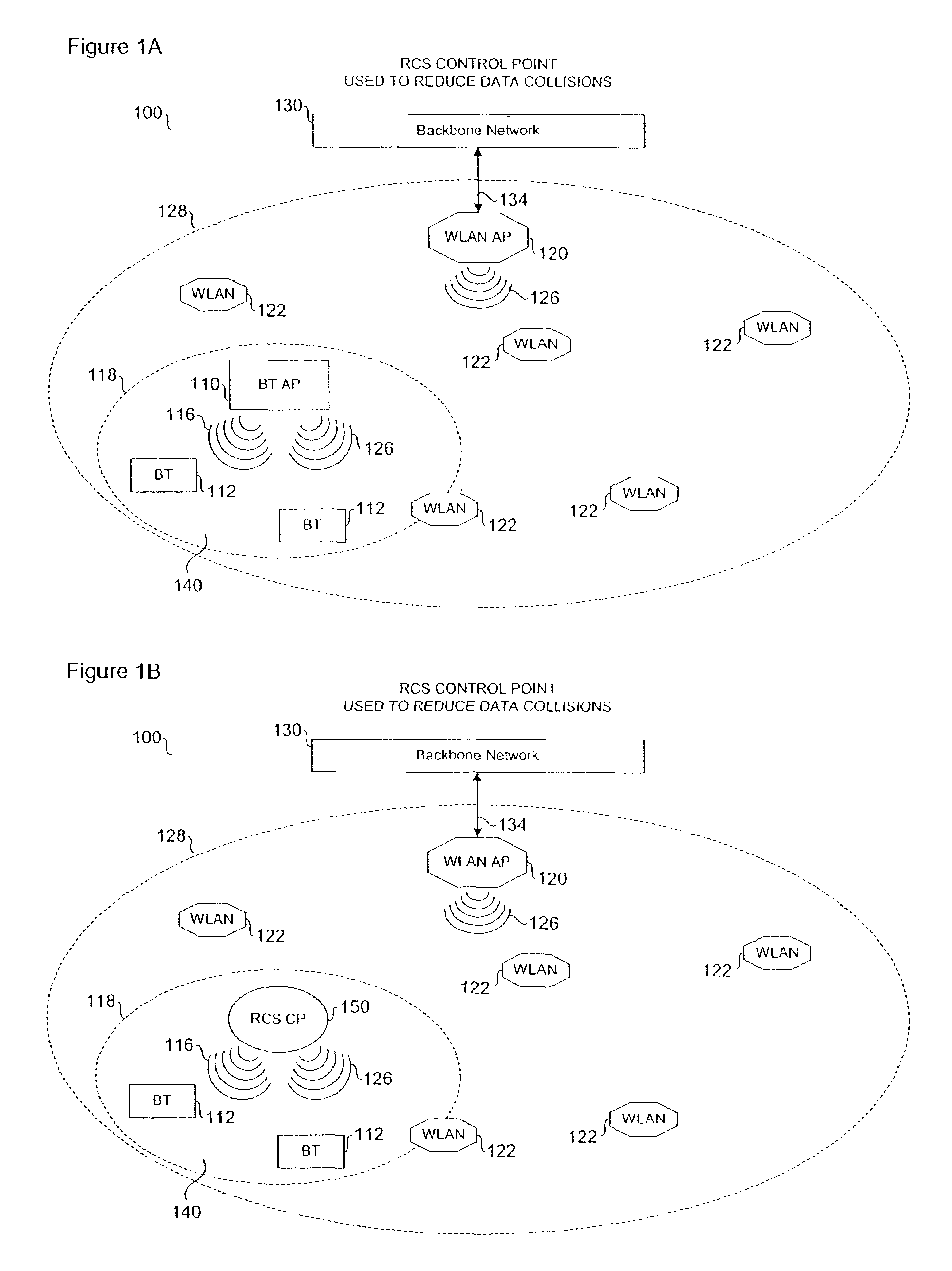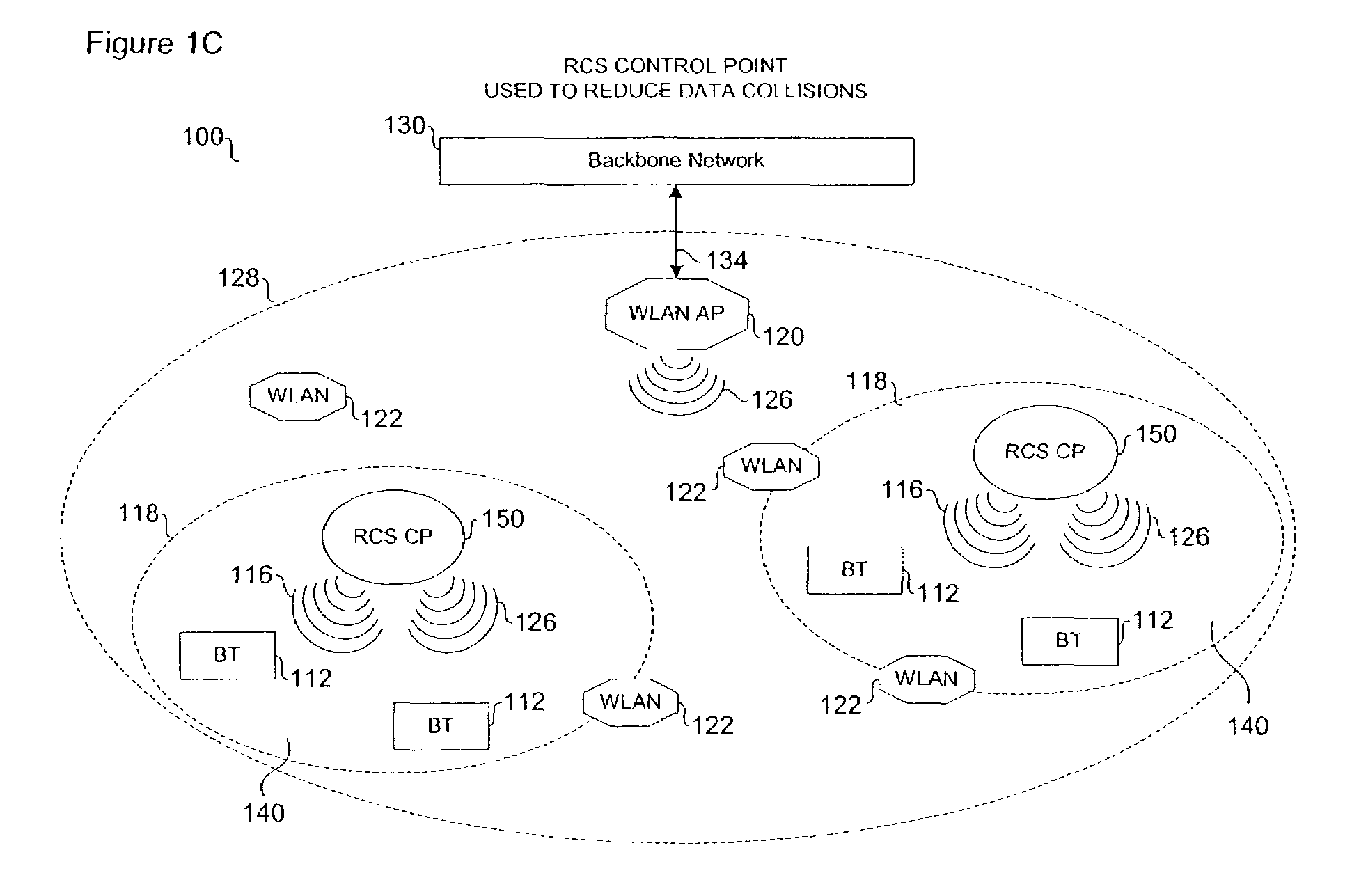Remotely-cooperative scheduling solution for moderating wireless protocols
a wireless communication protocol and remote co-operation technology, applied in the field of wireless networking systems, can solve problems such as exacerbated problems, degraded network performance and transmission rates in both devices families, and transmission interference and data corruption, and achieve the effect of reducing frequency-overlapping collisions
- Summary
- Abstract
- Description
- Claims
- Application Information
AI Technical Summary
Benefits of technology
Problems solved by technology
Method used
Image
Examples
Embodiment Construction
[0039]Although the following description exemplifies various embodiments of the present invention, it should be understood that omissions, substitutions, and changes in the form of the detail of the apparatus, system, and method as illustrated, as well as the uses thereof, may be made by those skilled in the art, without departing from the spirit of the present invention. Consequently, the scope of the present invention should not be limited to the disclosed embodiments, but should be defined by the appended claims. Reference will now be made to the drawings wherein like numerals refer to like parts throughout.
[0040]FIG. 1A illustrates one embodiment of a wireless communication network 100 with overlapping transmission access areas 118, 128 comprising a global access area 128 and a local access area 118. The global access area 128 comprises a global access point or global coordinating device 120. The local access area 118 comprises a local access point or local coordinating device 1...
PUM
 Login to View More
Login to View More Abstract
Description
Claims
Application Information
 Login to View More
Login to View More - R&D
- Intellectual Property
- Life Sciences
- Materials
- Tech Scout
- Unparalleled Data Quality
- Higher Quality Content
- 60% Fewer Hallucinations
Browse by: Latest US Patents, China's latest patents, Technical Efficacy Thesaurus, Application Domain, Technology Topic, Popular Technical Reports.
© 2025 PatSnap. All rights reserved.Legal|Privacy policy|Modern Slavery Act Transparency Statement|Sitemap|About US| Contact US: help@patsnap.com



